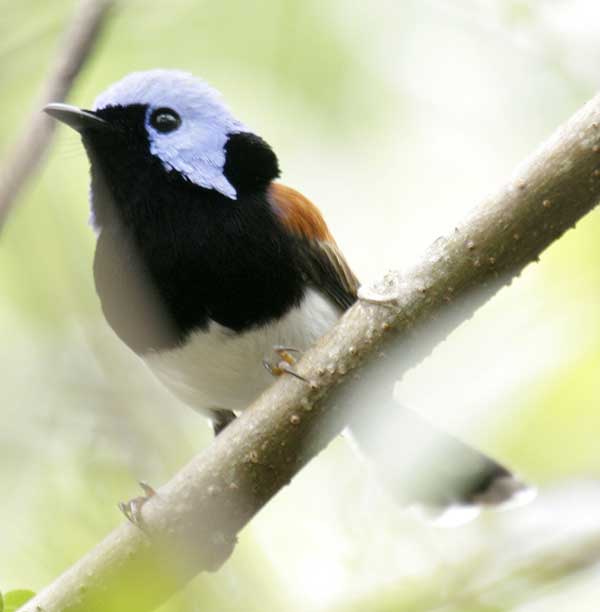Malurus amabilis (*) Cladus: Eukaryota Name Malurus amabilis Gould, 1852 Vernacular names Reference Proceedings of the Zoological Society of London (1850) Pt18 no.218 p.277 The Lovely Fairywren (Malurus amabilis) is a species of bird in the Maluridae family. It is endemic to Australia. Its natural habitats are subtropical or tropical dry forests and subtropical or tropical moist lowland forests. It was first described by the ornithologist John Gould in 1852, from a specimen collected by Captain Owen Stanley in Cape York.[1] Its species name is the Latin adjective ămābǐlis "lovable".[2] It is one of 12 species of the genus Malurus, commonly known as fairywrens, found in Australia and lowland New Guinea. Within the genus it belongs to a group of four very similar species known collectively as chestnut-shouldered fairywrens. The other three species are localised residents in restricted regions of Australia: the widespread Variegated Fairywren (M. lamberti), the Red-winged Fairywren (M. elegans) of the southwest corner of Western Australia, and the Blue-breasted Fairywren (M. pulcherrimus) of southern Western Australia and the Eyre Peninsula.[3] Like other fairywrens, it is notable for its marked sexual dimorphism, males adopting a highly visible breeding plumage of brilliant iridescent blue and chestnut contrasting with black and grey-brown. The brightly coloured crown and ear tufts are prominently featured in breeding displays.[4] The male in breeding plumage has striking azure blue ear coverts, crown and upper back, a black throat and nape, chestnut shoulders and a white-tipped blue tail. The wings are black and the belly white. Non-breeding males are more variable and resembles the female or has a more grey-brown plumage. The female has smokey blue upperparts and tail, with turquoise ear tufts, and dark grey wings, and white below. Both sexes have black bills, brown eyes and flesh-grey feet. Immature birds resemble females but have brown bills.[1] References 1. ^ a b Rowley & Russell, p. 165. Cited text * Rowley, Ian; Russell, Eleanor (1997). Bird Families of the World:Fairy-wrens and Grasswrens. Oxford: Oxford University Press. ISBN 0-19-854690-4. * BirdLife International 2004. Malurus amabilis. 2006 IUCN Red List of Threatened Species. Downloaded on 26 July 2007. Source: Wikipedia, Wikispecies: All text is available under the terms of the GNU Free Documentation License |
|

